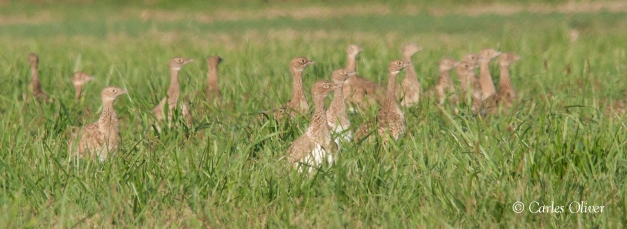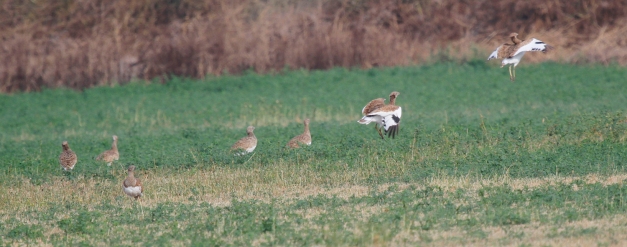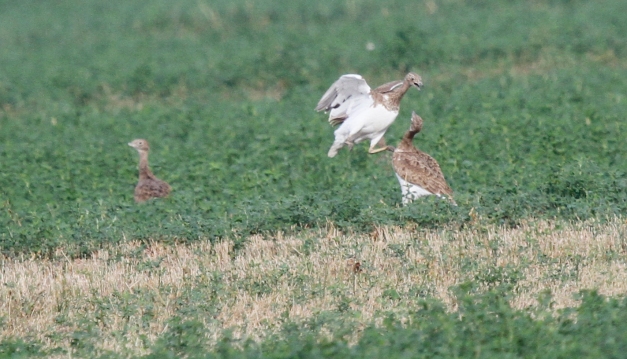Little Bustard (Tetrax tetrax) group display, an uncommon behaviour
The Little Bustard (Tetrax tetrax) is a medium size member of the Otidae family of birds. The range of this bustard in Europe is concentrated in the Iberian Peninsula and France with smaller (relictual?) populations in some areas of Italy and Macedonia. As much as half of the world’s population of this bird lives in Russia and Central Asia, wintering in large numbers in Azerbayan. In Iberia the bird nests in traditional wheat field areas and in the few remaining patches of natural steppe. In winter, most of the birds moves to crops offering them green leaves (their main food during winter) such as alfalfa.

During spring, Little Bustard males display in an individual lek, defending it agaisnt other males. In the lek, the males sing and do their famous «jumps» as an exhibition to other males and females. These jumps, about one metre high, have an important rule in indicating the hierarchy of the males and, at the same time, shows out their health. Little Bustards, as an interesting point from most of their relatives, don’t display in comunal leks. This is an important behaviour difference and it is probably the result of a predation press over comunal leks (Little Bustards are sensitive to predation from Foxes). That’s why is so uncommon to see different males to display together when being in a flock. The past 25th October we could see, during one of our trips, over 12 different males displaying in an alfalfa field! Both the date and the number of males involved makes this sight simply unique. At 10:20 we located a flock of over 40 Little Bustards in the Lleida Steppes, near Balaguer. The flock contained males, females and 1st winter birds. 

After 20 minutes of observation we started to see how some of the birds were taking a part from the flock. They looked like being all males. About 10:45 they started to make their typical jumps, starting the juveniles and following the adult males. It was a lot of ritualised agressivity among the males and even some fights were seen (see photos). The figths were preceded by long seconds of tension with the two males involved standing up side by side, in a typical behaviour of the males when defending their leks against an invasor male.

The scene was about 30 minutes long and at least 12 different males were «displaying». See the video posted in youtube by following this link: http://www.youtube.com/watch?v=cDVFu_nKe_w

